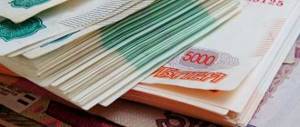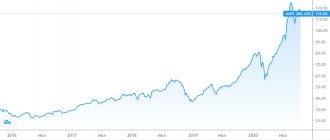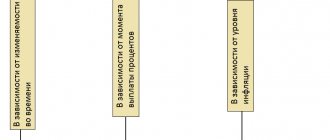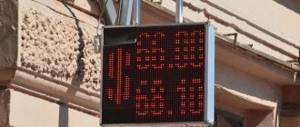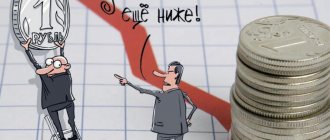Articles
26 Sep. 2021
The currencies of some countries are characterized by an extremely high level of stability and resistance to changes occurring in the global economy. And the states where they are used are characterized as strong, having a reliable financial position in the market. Most often, countries around the world accumulate them to store their gold and foreign exchange reserves. In addition, they often act as means of payment for purchasing goods and services internationally. So, in this article we will take a closer look at what is called the world reserve currency.
List of five world reserve currencies
| List of reserve currencies in the world | ||||||
| № | State | National currency | Ticker | Banknote denomination | Financial regulator | |
| 1 | Austria | Euro | ECB | EUR | monetary units: 5, 10, 20, 50, 100, 200, 500 | F.M.A. |
| 2 | Andorra | INAF | ||||
| 3 | Belgium | FSMA | ||||
| 4 | Germany | BaFin | ||||
| 5 | Greece | CMC | ||||
| 6 | Ireland | C.B.I. | ||||
| 7 | Spain | CNMV | ||||
| 8 | Italy | Consob | ||||
| 9 | Cyprus | CySEC | ||||
| 10 | Latvia | FCMC | ||||
| 11 | Lithuania | L.S.C. | ||||
| 12 | Luxembourg | CSSF | ||||
| 13 | Malta | MFSA | ||||
| 14 | Netherlands | AMF | ||||
| 15 | Portugal | CMVM | ||||
| 16 | Slovakia | N.B.S. | ||||
| 17 | Slovenia | SPS | ||||
| 18 | Finland | FIN-FSA | ||||
| 19 | France | ACPR | ||||
| 20 | Montenegro | Centralna Banka CG | ||||
| 21 | Estonia | FSAEE | ||||
| 22 | Great Britain | GBP | Bank of England | GBP | monetary units: 5, 10, 20, 50 | FCA |
| 23 | Switzerland | Swiss frank | National Library of Switzerland | CHF | bills: 10, 20, 50, 100, 200 and 1000 | FINMA |
| 24 | Japan | Japanese yen | Bank of Japan | JPY | banknotes: 1000, 2000, 5000, 10 000 | JSDA |
| North America | ||||||
| 25 | USA | U.S. dollar | Fed | USD | banknotes: 1, 2, 5, 10, 20, 50, 100 | |
World “reserve” and “freely convertible” currencies: common features and differences
Financial analysts often mistakenly use the terms “world reserve” and “freely convertible” currencies as synonyms . These are similar but not identical financial concepts.
There are 18 “freely convertible” currencies in the world from 38 countries . Of these, only five are also reserve currency - the US dollar, euro, British pound, Japanese yen and Swiss franc. The remaining 13 official currencies are candidates for inclusion in the reserve currencies.
| List of freely convertible currencies in the world | ||||||
| № | State | National currency | Ticker | Banknote denomination | Financial regulator | |
| 1 | Hungary | Hungarian forint | National Library of Hungary | HUF | banknotes: 500, 1000, 2000, 5000, 10,000, 20,000 | National Library of Hungary |
| 2 | Denmark | Danish krone | National Library of Denmark | DKK | banknotes: 50, 100, 200, 500 and 1000 | DFSA |
| 3 | Norway | Norwegian krone | Norwegian bank | NOK | banknotes: 50, 100, 200, 500 and 1000 | NFSA |
| 4 | Sweden | Swedish krona | Bank of Sweden | SEK | banknotes: 20, 50, 100, 200, 500, 1000 | |
| Oceania | ||||||
| 5 | Australia | Australian dollar | RB Australia | AUD | banknotes: 5, 10, 20, 50, 100 | ASIC |
| 6 | New Zealand | New Zealand dollar | RB NZ | NZD | banknotes: 5, 10, 20, 50, 100 | FSPR, NZX |
| Asia | ||||||
| 7 | Hong Kong | Hong Kong dollar | Hong Kong parole | HKD | bills: 10, 20, 50, 100, 500 and 1000 | SFC |
| 8 | Israel | Shekel | Bank of Israel | ILS | banknotes: 20, 50, 100 and 200 | ISA |
| 9 | The Republic of Korea | South Korean won | Bank of South Korea | KRW | monetary units: 1000, 5000, 10000 and 50000 | FSC |
| 10 | Singapore | Singapore dollar | DKUS | SGD | banknotes: 2, 5, 10, 50, 100, 1000, 10,000 | M.A.S. |
| North America | ||||||
| 11 | Canada | Canadian dollar | Bank of Canada | CAD | monetary units: 5, 10, 20, 50, 100 | IIROC |
| 12 | Mexico | Mexican Peso | Bank of Mexico | MXN | banknotes: 20, 50, 100, 200, 500, 1000 | CNBV |
| Africa | ||||||
| 13 | South Africa | South African rand | SARB | ZAR | banknotes: 10, 20, 50, 100, 200 | FSCA |
Usage
As was said, world reserve currencies belong to each individual state and can be used for any purpose for the organization of the state itself. At the same time, however, all civilized countries of the world spend such funds in an extremely small number of cases, which in most cases is due to the possibility of a fall in the value of the main national unit and a further crisis.
The world reserve currency, regardless of state and regional standards, can be equally used as:
- the main means of resolving problems with the exchange rate of the main national currency in the event of significant foreign exchange interventions;
- significant investment asset in any area;
- fixed assets of the state intended to pay all particularly important bills during export operations.
Of course, these are only the basic possibilities that can be realized if the state has the reserve currencies of the world.
Status and functions of the world reserve currency
- Reserve currencies are a kind of “super league” of freely convertible currencies, equal in status to gold, which are included in the assets of the Central Bank and, on their basis, the national banks of the country
- maintains the exchange rate of its national fiat money (including through interventions in the foreign exchange market);
provide all export and import applications for payments from exporters and importers;
- ensure uninterrupted operation of all exchange offices in the country and international payment systems (Mastercard, WebMoney Visa, Paysend Yandex.Money, Skrill, Perfect Money, PayPal, Alipay Sberbank Online, UnionPay Alfa-click, etc.;
- Reserve currencies form 89.08% of the SDR (Special Drawing Rights) of the IMF, which means 89.08% participate in international lending to states. Read more in the main article - Creditors or to whom the world's population owes $244 trillion.
- Reserve currencies provide 90% of the formation of currency pairs in the Forex market. Please note that the most popular quotes and online charts with the smallest spreads are available for currency pairs involving reserve currencies. This
a) between two reserve currencies - EUR USD, GBP USD, USD JPY, USD CHF, USD CAD, NZD USD, AUD USD, EUR CHF, GBP JPY, EUR JPY, EUR GBP, GBP CHF, CHF JPY,b) between two hard currency - candidates for reserve currency status: GBP AUD, AUD CHF, EUR NZD, EUR AUD, EUR CAD, EUR NOK, EUR SEK, AUD JPY, NZD JPY, CAD JPY, NZD CHF, CAD CHF, USD SGD , USD HKD, USD ZAR, USD ILS, USD MXN, GBP CAD, GBP NZD, GBP SEK, GBP NOK, USD SEK, ZAR JPY USD NOK, USD CNY,
c) compare with other currency pairs involving partially convertible currencies, which are rarely found among bank brokers, dealers and forex brokers - USD INR, GBP ETB, USD CZK, GBP NAD, EUR XAF, USD TND, USD RUB, CAD UGX, USD THB, JPY SDG, EUR RUB, EUR SOS, USD UAH, CAD SCR, USD BYN, GBP LYD, GBP RWF, USD PLN, JPY MZN, PLN RUB, GBP KES, CHF MAD, USD TRY, GBP MRU, EUR ZMW, USD XOF, RUB TJS, CAD CDF, JPY MGA, RUB EGP, EUR TZS, CAD MUR, EUR TZS, USD NGN,
. Read more in the main article Criteria and possibilities of the “freely convertible currency” status.
This situation is not accidental:
- the minimum spread is formed for currency pairs formed from 2 reserve currencies (or a reserve and a freely convertible official currency);
- the maximum spread is observed for currency pairs involving partially convertible currencies (Belarusian ruble, Ukrainian hryvnia, Polish zloty, Serbian dinar, Czech crown, Albanian lek, Bulgarian lev, Bosnia and Herzegovina convertible mark, Moldovan leu, etc.).
Euro – EURO – (EUR)
The Euro is the official currency of the European Union. Euro is abbreviated as EUR or the symbol €. The euro is divided into one hundred cents, or eurocents. The euro is new to the big eight major world currencies. The euro only came into circulation in 2002. Since then, the euro has gained a reputation as a stable currency and is the main competitor to the US dollar for primacy in the list of major world currencies. Therefore, many central banks of a number of countries keep their foreign currency savings not only in US dollars, but also in euros. The euro is a truly international currency. At the moment, the Eurozone consists of 17 EU countries. Here is a list of EU countries whose official currency is the euro: Austria, Belgium, Cyprus, Estonia, Finland, France, Germany, Greece, Ireland, Italy, Luxembourg, Malta, the Netherlands, Portugal, Slovakia, Slovenia, Spain. In addition to the countries of the European Union, the Euro is also the official currency of dwarf European states - San Marino, Andorra, Monaco and the Vatican.
Two notable EU member countries that are not in the Eurozone and have not adopted the euro are the UK and Sweden.
The stability of the Euro is monitored by the European Central Bank. This bank is also the Central Bank of the European Union, which regulates and supervises the activities of the central banks of all EU member countries. All international banking centers in Europe, with the exception of Switzerland and Liechtenstein, consider the euro to be their default working currency. Therefore, all prices for the services of European banks, as well as minimum deposits, will always be in euros.
The system of reserve currencies and the key rate of the Central Bank in the world
The fourth significance of reserve currencies is the formation of a global trend to increase or decrease the key rate in the world . All banks in the world are guided by the key interest rates of the Central Bank of reserve currencies and, if they change, they immediately carry out a similar action (increase or, conversely, decrease).
Next, commercial banks change interest rates on their retail loans and deposits , accelerating (or slowing down) the development of business processes in their countries, the level of inflation, the average salary by sector of the economy, followed by the degree of devaluation / revaluation of their own national currencies, the filling of the state budget and the size its deficit (or surplus).
Key rates of the world Central Bank:
| Key rates of the Central Bank of the world on Forex currencies | |||||
| A country | central bank | Currency and its ticker | Central Bank key rate | Date of entry | Financial regulator |
| Australia | RB Australia | Australian dollar (AUD) | 0.5% | 03.03.2020 | ASIC |
| Great Britain | Bank of England | pound sterling (GBP) | 0.25% | 11.03.2020 | FCA |
| Hong Kong | Hong Kong Monetary Authority | Hong Kong dollar (HKD) | 0,86% | March 2020 | SFC |
| European Union | European Central Bank | euro (EUR) | 0% | 12.03.2020 | MiFID (EU requirements), ACPR and AMF (France), BaFin (Germany), Consob (Italy), CySEC (Cyprus), MFSA (Malta), AFM (Netherlands), FSAEE (Estonia), CMVM (Portugal), FSMA ( Belgium), CNMV (Spain), FCMC (Latvia) |
| Canada | Bank of Canada | Canadian dollar (CAD) | 1.25% | 04.03.2020 | IIROC |
| China | People's Bank of China | Yuan (CNY) | 4.35% | 20.11.2019 | CSRC, FinCom |
| New Zealand | Reserve Bank of New Zealand | New Zealand dollar (NZD) | 0,25% | 15.03.2020 | FSCL |
| Singapore | Monetary Authority of Singapore | Singapore dollar (SGD) | 1.26% | February 2020 | M.A.S. |
| USA | US Federal Reserve | US dollar (USD) | 0.25% | 15.03.2020 | NFA, CFTC, SEC |
| Switzerland | National Library of Switzerland | Swiss franc (CHF) | -0.75% | 12.12.2019 | FINMA |
| Japan | Bank of Japan | Japanese yen (JPY) | -0.1% | 16.03.2020 | JFSA |
| Other forex currencies in Europe | |||||
| Albania | Bank of Albania | Albanian lek (ALL) | 1% | 18.12.2019 | FSC Albania |
| Belarus | National Library of the Republic of Belarus | Belarusian ruble (BYN) | 8,75% | 19.02.2020 | ARFIN |
| Bulgaria | Bulgarian People's Bank | Bulgarian Lev (BGN) | 0% | 2.01.2020 | FSC Bulgaria |
| Bosnia and Herzegovina | Central Bank of BiH | Convertible mark | 3.03% | 15.02.2020 | Central Bank of BiH |
| Hungary | National Library of Hungary | Hungarian forint (HUF) | 0.9% | 28.01.2020 | HFSA Hungary |
| Gibraltar | Treasury of Gibraltar | Gibraltar pound (GIP) | May 2020 | Treasury of Gibraltar | |
| Denmark | National Bank of Denmark | Danish krone (DKK) | — 0.75% | March 2020 | DFSA Denmark |
| Iceland | Central Bank of Iceland | Icelandic krona (ISK) | 2,75% | March 2020 | FSA Iceland |
| Moldova | National Bank of Moldova | Moldovan leu (MDL) | 4.5% | 04.03.2020 | Licensing Chamber |
| Norway | Norwegian Bank | Norwegian krone (NOK) | 1% | 13.03.2020 | NFSA |
| Poland | National Bank of Poland | Polish zloty (PLN) | 1.5% | 08.01.2020 | PFSA/KNF |
| Russia | Bank of Russia | Russian ruble (RUB) | 6% | 07.02.2020 | Bank of Russia (until 2013, Federal Financial Markets Service) |
| Romania | National Bank of Romania | Romanian leu (RON) | 2.5% | 07.02.2020 | A.S.F. |
| North Macedonia | People's Bank of the Republic of North Macedonia | Macedonian dinar (MKD) | 2% | May 2020 | National Library of Macedonia |
| Serbia | People's Bank of Serbia | Serbian dinar (RSD) | 2,25% | March 2020 | National Library of Serbia |
| Ukraine | National Bank of Ukraine | Ukrainian hryvnia (UAH) | 11.0% | 30.01.2020 | NCCPF |
| Croatia | Croatian People's Bank | Croatian kuna (HRK) | 2.5% | February 2020 | HANFA |
| Czech | National Bank of the Czech Republic | Czech crown (CZK) | 2% | 06.02.2020 | CNB |
| Sweden | Bank of Sweden | Swedish krona (SEK) | 0% | 12.02.2020 | (FSA Sweden) |
| Forex currencies in Asia | |||||
| Azerbaijan | Central Bank of the Azerbaijan Republic | Azerbaijani manat (AZN) | 7.5% | February 2020 | MBA |
| Armenia | Central Bank of the Republic of Armenia | Armenian dram (AMD) | 5.5% | 07.01.2020 | Ministry of Finance |
| Afghanistan | Yes Afghanistan Bank | Afghan Afghani (AFN) | 15% | March 2020 | Yes Afghanistan Bank |
| Bangladesh | Bangladesh Bank | Bangladeshi Taka (BDT) | 6% | March 2020 | Bangladesh Bank |
| Bahrain | Central Bank of Bahrain | Bahraini Dinar (BHD) | 1% | March 2020 | Central Bank of Bahrain |
| Brunei | Brunei Monetary Authority | Brunei dollar (BND) | 5,5% | March 2020 | UDOB |
| Butane | Royal Monetary Authority of Bhutan | Ngultrum (BTN) | 7,04% | March 2020 | HLC Bhutan |
| Vietnam | GB of Vietnam | Vietnamese dong (VND) | 6% | February 2020 | SSC |
| Georgia | National Library of Georgia | Georgian lari (GEL) | 9% | 29.01.2020 | National Library of Georgia |
| Israel | Bank of Israel | Israeli shekel (ILS) | 0.25% | 09.01.2020 | ISA |
| India | Reserve Bank of India | Indian Rupee (INR) | 5.15% | 06.02.2020 | SEBI |
| Indonesia | Bank Indonesia | Indonesian rupiah (IDR) | 5% | 21.02.2020 | Bappebti |
| Jordan | Central Bank of Jordan | Jordanian dinar (JOD) | 2,5% | March 2020 | Central Bank of Jordan |
| Iraq | Central Bank of Iraq | Iraqi dinar (IQD) | 4% | March 2020 | Central Bank of Iraq |
| Iran | Central Bank of the Islamic Republic of Iran | Iranian rial (IRR) | 18% | March 2020 | Central Bank of Iran |
| Yemen | Central Bank of Yemen | Yemeni rial (YER) | 27% | March 2020 | Central Bank of Yemen |
| Kazakhstan | National Bank of the Republic of Kazakhstan | Kazakhstan tenge (KZT) | 12% | 17.03.2020 | AFSA |
| Cambodia | National Bank of Cambodia | Cambodian riel (KHR) | 1,46% | March 2020 | National Library of Cambodia |
| Qatar | Central Bank of Qatar | Qatari rial (QAR) | 2,5% | March 2020 | Central Bank of Qatar |
| Kyrgyzstan | National Bank of the Kyrgyz Republic | Kyrgyzstani som (KGS) | 4,25% | January 2020 | National Library of Kyrgyzstan |
| DPRK | Central Bank of the DPRK | North Korean won (KPW) | n.d. | n.d. | Central Bank of the DPRK |
| The Republic of Korea | Bank of South Korea | won (KRW) | 0.75% | 16.03.2020 | FSC |
| Kuwait | Central Bank of Kuwait | Kuwaiti Dinar (KWD) | 1.5% | 16.03.2020 | Central Bank of Kuwait |
| Laos | Bank of Lao PDR | Laotian kip (LAK) | 4% | March 2020 | Bank Lao PDR |
| Lebanon | Bank of Lebanon | Lebanese pound (LBP) | 6,75% | March 2020 | Bank of Lebanon |
| Malaysia | Bank Negara Malaysia | Malaysian ringgit (MYR) | 2.5% | March 2020 | Bank Negara Malaysia |
| Macau | Macau Currency Authority | Macau pataca (MOP) | 0,86% | >March 2020 | UDOM |
| Mongolia | Bank of Mongolia | Mongolian tugrik (MNT) | 11% | 05.01.2020 | Financial Regulatory Committee of Mongolia |
| Myanmar | Central Bank of Myanmar | Myanmar Kyat (MMK) | 10% | March 2020 | Central Bank of Myanmar |
| Nepal | Nepal Rastra Bank | Nepalese rupee (NPR) | 5,5% | March 2020 | Nepal Rastra Bank |
| UAE | Central Bank of the UAE | UAE dirham (AED) | 1,5% | March 2020 | Dubai? FSA |
| Oman | Central Bank of Oman | Omani rial (OMR) | 2,15% | March 2020 | CMA |
| Pakistan | State Bank of Pakistan | Pakistani rupee (PKR) | 11% | March 2020 | GB of Pakistan |
| Saudi Arabia | ADO SA | Saudi Riyal (SAR) | 1,75% | March 2020 | CMA |
| Syria | Central Bank of Syria | Syrian pound (SYP) | 0% | March 2020 | Central Bank of Syria |
| Tajikistan | National Bank of Tajikistan | Tajikistani somoni (TJS) | 12,75% | January 2020 | National Library of Tajikistan |
| Thailand | Bank of Thailand | Thai baht (THB) | 1.25% | 05.02.2020 | Bank of Thailand |
| Turkmenistan | Central Bank of Turkmenistan | Turkmen manat (TMT) | 5% | January 2020 | Central Bank of Turkmenistan |
| Türkiye | Central Bank of Turkey | Turkish lira (TRY) | 10,75% | 19.02.2020 | C.M.B. |
| Uzbekistan | Central Bank of Uzbekistan | Uzbek som (UZS) | 16% | March 2020 | Central Bank of the Republic of Uzbekistan |
| Philippines | Central Bank of the Philippines | Philippine Peso (USD) | 3,75% | March 2020 | Central Bank of the Philippines |
| Sri Lanka | Central Bank of Sri Lanka | Sri Lankan rupee (LKR) | 7,5% | March 2020 | Central Bank of Sri Lanka |
| Forex currencies in Africa | |||||
| Algeria | Bank of Algiers | Algerian dinar (DZD) | 3.75% | March 2020 | EFSA |
| Angola | National Library of Angola | Angolan Kwanzaa (AOA) | 15,5% | May 2020 | National Library of Angola |
| Benin | Central Bank ZAG | West African franc (XOF) | 4,5% | ay 2020 | Central Bank ZAG |
| Botswana | Bank of Botswana | Botswana Pula (BWP) | 4,25% | ay 2020 | Bank of Botswana |
| Burkina Faso | Central Bank ZAG | West African franc (XOF) | 4,5% | ay 2020 | Central Bank ZAG |
| Burundi | Bank of the Republic of Burundi | Burundian franc (BIF) | 5,25% | ay 2020 | Bank of the Republic of Burundi |
| Guinea | Central Bank of the Republic of Guinea | Guinean franc (GNF) | 11% | ay 2020 | Central Bank of the Republic of Guinea |
| Egypt | Central Bank of Egypt | Egyptian pound (EGP) | 12.25% | 16.01.2020 | COSOB |
| Zambia | Bank of Zambia | Zambian kwacha (ZMW) | 11,5% | ay 2020 | SEC |
| Zimbabwe | RB Zimbabwe | US dollar, pound sterling, rand | 25% | art 2020 | RB Zimbabwe |
| Cameroon | Bank of Central African States | Central African franc (XAF) | 3,25% | ay 2020 | B GCA |
| Kenya | Central Bank of Kenya | Kenyan shilling (KES) | 7% | ay 2020 | Central Bank of Kenya |
| Congo | Central Bank of Congo | Congolese franc (CDF) | 7,5% | ay 2020 | Central Bank of Congo |
| Ivory Coast | Central Bank ZAG | West African franc (XOF) | 4,5% | ay 2020 | Central Bank ZAG |
| Libya | Central Bank of Libya | Libyan dinar (LYD) | 3,32% | ay 2020 | Central Bank of Libya |
| Mauritius | Bank of Mauritius | Mauritian rupee (MUR) | 2,85% | ay 2020 | Bank of Mauritius |
| Mauritania | Central Bank of Mauritania | Mauritanian ouguiya (MRU) | 6,5% | May 2020 | Central Bank of Mauritania |
| Madagascar | Central Bank of Madagascar | Malagasy Ariary (MGA) | 9,5% | May 2020 | Central Bank of Madagascar |
| Morocco | Bank al-Maghrib | Moroccan Dirham (USD) | 2,25% | March 2020 | AMMC |
| Mozambique | Bank of Mozambique | Mozambican metical (MZN) | 11,25% | March 2020 | Bank of Mozambique |
| Namibia | Bank of Namibia | Namibian dollar (NAD) | March 2020 | Bank of Namibia | |
| Nigeria | Central Bank of Nigeria | Nigerian Naira (NGN) | 13,5% | May 2020 | SEC Nigeria |
| Rwanda | National Library of Rwanda | Rwandan franc (RWF) | May 2020 | National Library of Rwanda | |
| Seychelles | Central Bank of Seychelles | Seychelles rupee (SCR) | 5% | May 2020 | FSA (SC) |
| Senegal | Central Bank ZAG | West African franc (XOF) | 4,5% | May 2020 | Central Bank ZAG |
| Somalia | Central Bank of Somalia | Somali shilling (SOS) | May 2020 | Central Bank of Somalia | |
| Sudan | Central Bank of Sudan | Sudanese pound (SDG) | 16,5% | May 2020 | Central Bank of Sudan |
| Tanzania | Bank of Tanzania | Tanzanian shilling (TZS) | 5% | May 2020 | CMSA |
| Tunisia | Central Bank of Tunisia | Tunisian dinar (TND) | 7.75% | February 2020 | Central Bank of Tunisia |
| Uganda | Bank of Uganda | Ugandan shilling (UGX) | 8% | May 2020 | Bank of Uganda |
| Chad | Bank of Central African States | Central African franc (XAF) | 3,25% | May 2020 | GCA Bank |
| Equatorial Guinea | Bank of Central African States | Central African franc (XAF) | 3,25% | ay 2020 | GCA Bank |
| Ethiopia | National Bank of Ethiopia | Ethiopian birr (ETB) | 5,21% | May 2020 | National Bank of Ethiopia |
| South Africa | South African Reserve Bank | South African rand (ZAR) | 6.25% | 16.01.2020 | FSCA |
| Forex currencies in Latin America | |||||
| Argentina | Central Bank of Argentina | Argentine Peso (ARS) | 38% | March 2020 | CNV |
| Bahamas | Central Bank of the Bahamas | Bahamian dollar (BSD) | 4% | April 2020 | SCB |
| Belize | Central Bank of Belize | Belize dollar (BZD) | 2,3% | April 2020 | IFSC |
| Bermuda | Parole Bermuda | Bermudian dollar (BMD) | 0% | April 2020 | B.M.A. |
| Bolivia | Central Bank of Bolivia | Boliviano (BOB) | 2,79% | March 2020 | ASFI |
| Brazil | Central Bank of Brazil | Brazilian real (BRL) | 4.25% | 06.02.2020 | CVM |
| Haiti | Bank of the Republic of Haiti | Haitian gourde (HTG) | 22% | April 2020 | Bank of Haiti |
| Honduras | Central Bank of Honduras | Honduran Lempira (HNL) | 4,5% | April 2020 | Central Bank of Honduras |
| Grenada | Eastern Caribbean Central Bank | East Caribbean dollar (XCD) | 0,25% | April 2020 | Eastern Caribbean Central Bank |
| Dominican Republic | Central Bank of the DR | Dominican Peso (DOP) | 4.5% | February 2020 | DFSU |
| Colombia | Bank of the Republic | Colombian peso (COP) | 4.25% | March 2020 | Bank of the Republic |
| Costa Rica | Central Bank of Costa Rica | Costa Rican colon (CRC) | 2,79% | March 2020 | SUGEVAL |
| Cuba | Central Bank of Cuba | Cuban Peso (CUP) | 2,25% | January 2020 | Central Bank of Cuba |
| Mexico | Bank of Mexico | Mexican Peso (MXN) | 7.00% | 13.02.2020 | CNBV |
| Nicaragua | Central Bank of Nicaragua | Nicaraguan Cordoba (NIO) | 7,2% | April 2020 | SIBOIF |
| Panama | NB of Panama | Panamanian Balboa (PAB) | 1,36% | April 2020 | NB of Panama |
| Paraguay | Central Bank of Paraguay | Paraguayan Guarani (PYG) | 1,25% | April 2020 | Central Bank of Paraguay |
| Peru | RB Peru | Peruvian salt (PEN) | 1,25% | 13.02.2020 | SBS, SMV |
| Saint Vincent and the Grenadines | Eastern Caribbean Central Bank | East Caribbean Dollar(XCD) | 0,25% | April 2020 | FSA St. VG |
| Chile | Central Bank of Chile | Chilean peso (CLP) | 1.75% | 30.01.2020 | SBIF |
| Jamaica | Bank of Jamaica | Jamaican dollar (JMD) | 0,5% | March 2020 | FSC Jamaica |
Comments Wiki Masterforex-V : Please note that the key rates on all reserve currencies are very, very low, which allows you to issue loans in Swiss francs, Japanese yen, pounds, euros and US dollars at a very low interest rate, which in turn increases the attractiveness of these reserve currencies.
Why do you need a backup basket?
It is entrusted with large functions for global settlements and savings:
- Use as a means of payment in cross-country transactions.
- Maintaining the exchange rate of the national currency and carrying out foreign exchange interventions.
- Increasing the competitiveness of states whose national currencies are recognized as reserve ones.
- A certain lever of pressure on world society and the economy in the form of the issue of funds and the key refinancing rate.
- A method for preserving government assets and funds.
What characterizes all the reserve currencies of the world (what they have in common)
- 100% liquidity with the ability to instantly convert reserve currency in any bank or exchange office in the world into any other money, banknotes or coins;
- unlimited international transfers of reserve currencies anywhere in the world without the cost of exchanging it for a third currency;
- almost 100% probability of opening a deposit in any serious bank in the world in a reserve currency;
- constant demand for reserve currencies from all more than 150 National Banks of the world;
- the opportunity to freely purchase wholesale quantities of various commodity futures on any of the largest commodity exchanges in the world. Everything in the world is sold for reserve currencies - Brent oil, WTI, zinc, URALS, tin, Oman Crude Oil, gold, natural gas, palladium, gas oil, rice, platinum, fuel oil, rubber, corn, nickel, gasoline, aluminum, steel, uranium, cotton, lead, diesel, soybean, molybdenum, biodiesel, polypropylene, methanol, coal, lithium, electricity, cobalt, kerosene, silver, sugar, liquefied gas, brass, wheat, etc. For more details, see the list of the world's largest commodity exchanges
| A country | Exchange | National currency | Financial regulator |
| North America | |||
| USA | ICE (Intercontinental Exchange, theice.com), CME (Chicago Mercantile Exchange, cmegroup.com), CBOT (Chicago Board of Trade, cmegroup.com/company/cbot.html), COMEX (Commodity Exchange, part of NYMEX, cmegroup.com/ company/comex.html), Minneapolis Grain Exchange (MGEX, mgex.com), NADEX (binary options exchange, nadex.com), NYMEX (New York Mercantile Exchange, cmegroup.com/company/nymex.html) | USD | NFA, CFTC, SEC |
| South America | |||
| Argentina | Rosario Futures Exchange ROFEX (rofex.com.ar), Buenos Aires Futures Exchange MATBA (matba.com.ar) | A.R.S. | CNV |
| Asia | |||
| Malaysia | KLSE (Kuala Lumpur Futures Exchange, bursamalaysia.com) | MYR | Labuan FSA |
| Singapore | SGX (Singapore Exchange, sgx.com) | SGD | M.A.S. |
| India | MCX (mcxindia.com), NCDEX (ncdex.com) | INR | SEBI |
| China | Dalian Commodity Exchange (dce.com.cn), Zhengzhou Commodity Exchange (CZCE, english.czce.com.cn), HKE (hkex.com.hk) | CNY | CSRC |
| Taiwan | TWSE (Taiwan Stock Exchange, twse.com.tw) | TWD | CSRC |
| Türkiye | BIST (Borsa Istanbul, borsaistanbul.com) | TRY | C.M.B. |
| UAE | Dubai Gold and Commodity Exchange (DGCX, dgcx.ae), Dubai DME Exchange (dubaimerc.com) | AED | Dubai? FSA |
| Japan | Tokyo Commodity Exchange (TOCOM, tocom.or.jp), Osaka Dojima Commodity Exchange (ODE, osaka-dojima.org) | JPY | JSDA |
| Europe | |||
| Russia | MOEX (Moscow Exchange, moex.com), St. Petersburg International Commodity Exchange (spimex.com), JSC National Commodity Exchange (namex.org), FORTS (Moscow Exchange derivatives market, moex.com/s96) | RUB | Bank of Russia |
| Great Britain | LME (London Metal Exchange, lme.com), LIFFE (London Futures Exchange, theice.com/futures-europe) | GBP | FCA |
| Oceania | |||
| Australia | ASX (Australian Securities Exchange, asx.com.au) | AUD | ASIC |
| Africa | |||
| South Africa | Safex (South African Futures Exchange, jse.co.za/trade/derivative-market/commodity-derivatives) | ZAR | FSCA |
| Ethiopia | Ethiopian Commodity Exchange (ECX, ecx.com.et) | ETB | National Bank of Ethiopia |
Currency exchange rates: who, where and how determines them online?
Determined online under electronic trading conditions on five interconnected directions of the forex currency market. This:
- trading currencies on stock exchanges - so on the New York Stock Exchange and NASDAQ they trade the US dollar, SSE and SZSE - Chinese yuan, TSX Canadian dollar, BSE and NSE - Indian rupee, LSE - pound, WBAG, BME, FSE and Euronext - euro , SWX - Swiss franc, OSE - Norwegian krone, BMV - Mexican peso, etc.;
- trading currencies on commodity exchanges (for example, the Chicago Mercantile Exchange provides a trading platform for currency futures of the euro, dollar, Swiss franc, Japanese yen, Canadian, Australian and New Zealand dollars);
- trading on universal exchanges (MOEX - ruble, BCS - Chilean peso, Brasil Bolsa Balcao - Brazilian real, GPW - zloty, ADX - UAE dirham, SET - Thai baht, KRX - Korean won, NZX - New Zealand dollar, BIST - Turkish lira, HKE - Hong Kong dollar, HOSE - Vietnamese dong, Tadawul - Saudi riyal, ASX - Australian dollar, TASE - shekel, KLSE - Malaysian ringgit, QSE - Qatari rial, PSE - Philippine peso, SGX - Singapore dollar, etc., as a rule, fiat national money);
- trading on the over-the-counter forex market (all orders opened by investors and traders to buy or sell from all STP and NDD accounts forex brokers, PAMM brokers, CFD brokers, LAMM brokers, options brokers, bank brokers are required to automatically withdraw their PRIME broker to the bank , and he already sends the total position for buying / selling currencies to one of the above listed stock, futures or universal exchanges);
- Currency trading on ECN accounts is direct trading of foreign exchange market participants with each other online, when all orders of large players - trust funds, investment funds, hedge funds, banks, ETF funds, investment funds - automatically go directly to liquidity providers, from them to one of the stock and universal exchanges.
Read more in the main article Market participants: who and where exchange rates are determined. and Participants and place of trading in the forex market.
Favorable exchange rates
To successfully exchange funds from different countries, you need to know favorable exchange rates. Each commercial financial institution has the opportunity to set them at its own discretion for the purpose of making a profit from foreign exchange transactions. Where can I find the best courses? The site sravni.ru offers users current, reliable, constantly updated information about exchange rates of large banks in different cities of the country. The information is conveniently structured. Visitors to the resource can choose the optimal exchange conditions and go to the bank’s website using a direct link. Customers of the service are also offered an online calculator that allows them to calculate the result of the exchange.
Advice from Sravni.ru:
It is not necessary to invest your cash reserves in purchasing an expensive, but exotic currency. You also need to take into account such factors as the convertibility and liquidity of the currency - how quickly it can be sold at a price that is favorable to you. Even though the Kuwaiti dinar costs more than 150 rubles, it will be problematic to exchange it in a regular bank.
Recommended Forex brokers for trading the world's reserve currencies.
Masterforex-V Academy, based on its own Forex Broker Rating, recommends only 12 “best Forex brokers” of the major league (out of more than 400), selected by us over 15 years of monitoring dealers and brokers of Forex, cryptocurrencies, binary options, etc.).
| № | Broker name, year founded | Financial instruments | Licenses from financial regulators | ||||
| Currencies | Goods | Stock market | Cryptocurrencies | PAMM | |||
| 1. | NordFX (2008) | + | + | + | + | + | CySEC, MiFID |
| 2. | Swissquote (1996) | + | + | + | + | — | FINMA, FCA, SFC, Dubai FSA |
| 3. | Dukascopy (1998) | + | + | + | — | — | FINMA, FCMC |
| 4. | Alpari (1998) | + | + | + | + | + | ARFIN |
| 5. | FxPro (2006) | + | + | + | — | — | FCA, CySEC, FSB, Dubai FSA, BaFin, ACPR, CNMV |
| 6. | Interactive Brokers (1977) | + | + | + | — | — | NFA, CFTC, FCA, IIROC |
| 7. | Oanda (1996) | + | + | + | — | — | NFA, CFTC, FCA, IIROC, MAS, ASIC |
| 8. | FXCM (1999) | + | + | + | + | — | FCA, BaFin, ACPR, AMF, Dubai FSA, SFC, ISA, ASIC, FSB |
| 9. | Saxo Bank (1992) | + | + | + | — | — | Danish FSA, Consob, CNB, ASIC, MAS, FINMA, JFSA, SFC Hong Kong |
| 10. | FOREX.com (1999) | + | + | + | + | — | NFA, CFTC, FCA, ASIC, JSDA, MAS, SFC |
| 11. | FIBO Group (1998) | + | + | + | + | + | CySEC |
| 12. | FINAM FOREX (1994) | + | — | — | — | — | Bank of Russia |
Sincerely, wiki Masterforex-V, free (school) and professional training courses Masterforex-V for working on Forex, stock, commodity and cryptocurrency exchanges.

